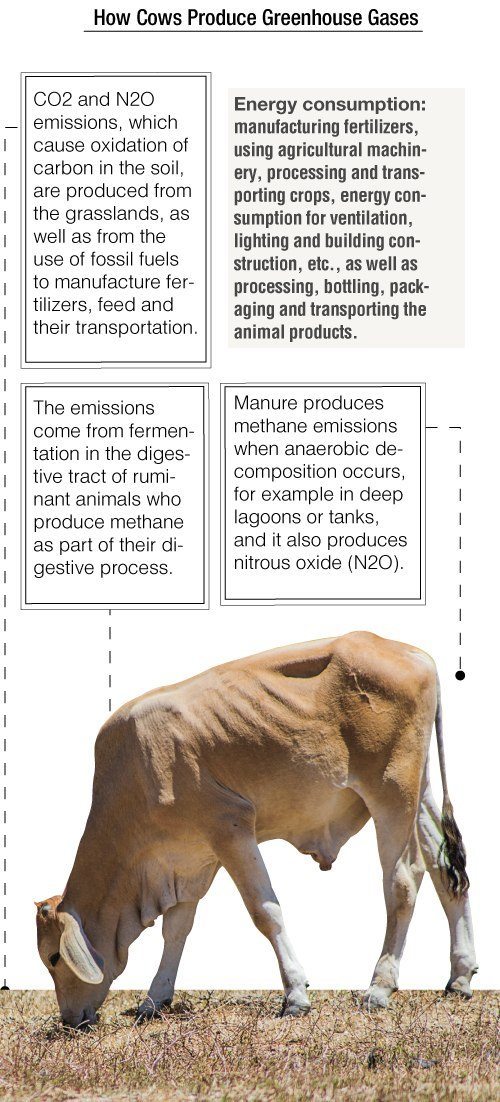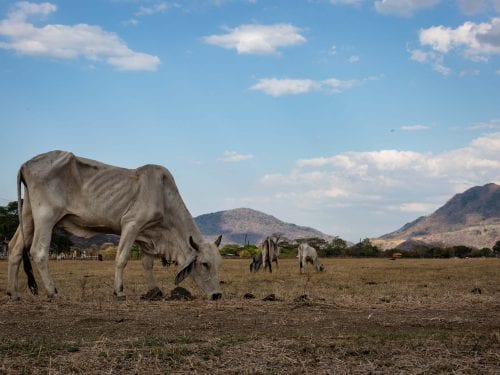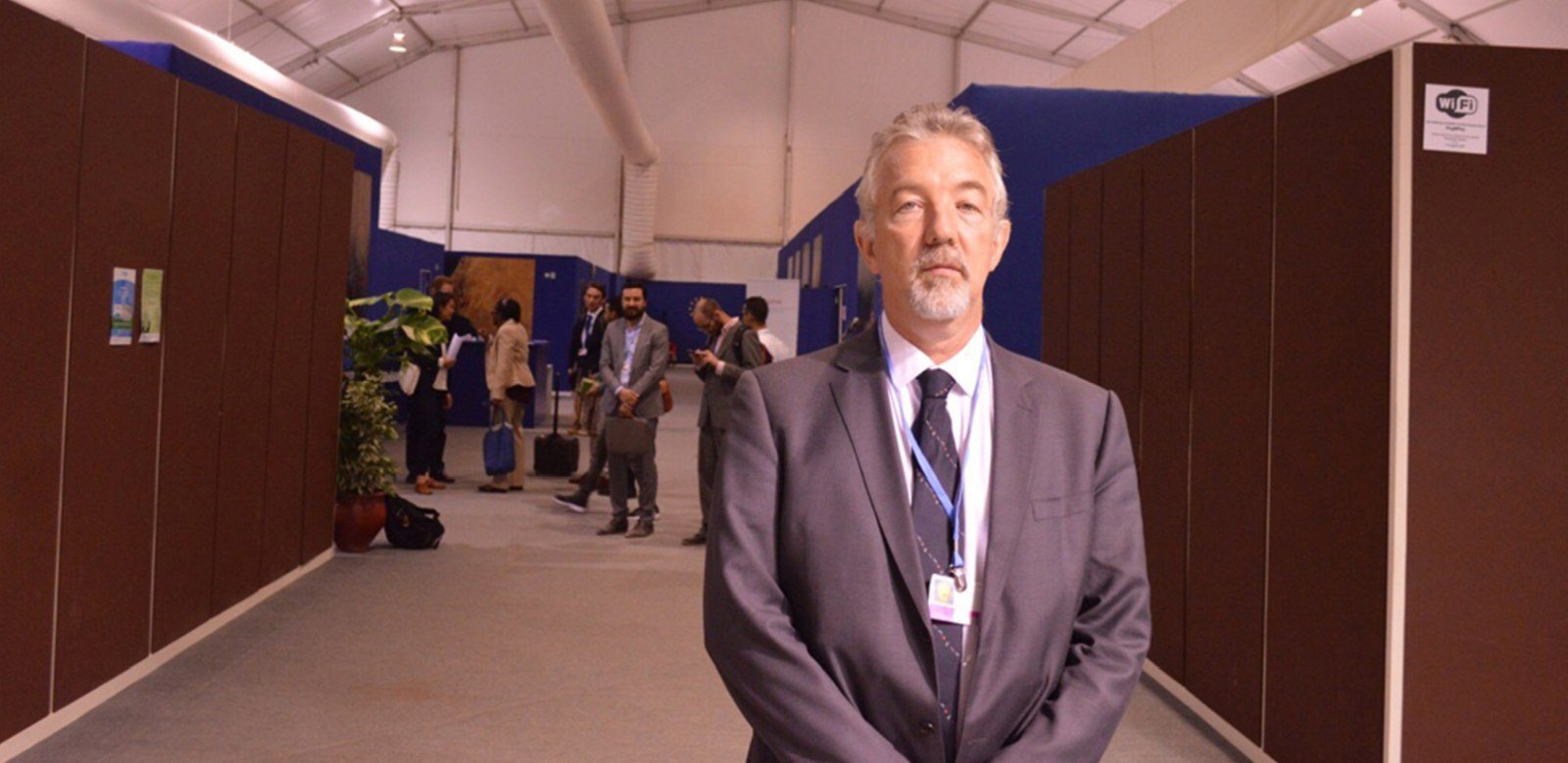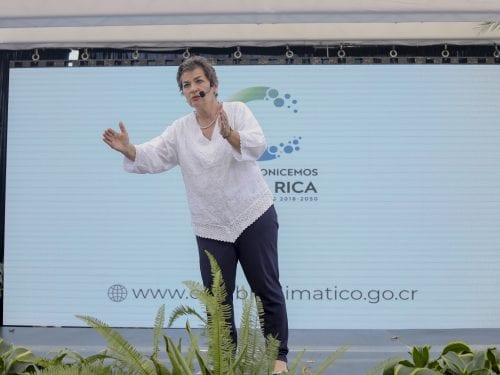
We can debate the causes but what can no longer be argued is whether or not climate change exists. Its impact on the world and particularly on the province of Guanacaste is real. A lot of environmental damage has occurred and if the production models and the way natural resources are used doesn’t change, in just 30 years we could be dealing with very unfavorable climate scenarios.
Aware of this harsh reality, the Ministry of Agriculture and Livestock (MAG- Ministerio de Agricultura y Ganaderia), in conjunction with the Tropical Agricultural Research and Education Center (CATIE- Centro Agronómico Tropical de Investigación y Enseñanza), is designing livestock production programs that incorporate new technologies and that will gradually change the type of open-range cattle ranching. The programs seek to reduce the greenhouse gas emission that come from cows.
The way that meat and dairy production is done now represents a high contribution to the world’s greenhouse gas emissions (GHGs), estimated at 7.1 gigatons (GT) of carbon dioxide per year. That percentage is higher than the emissions produced by the entire global public transportation system, including vehicles, trains, boats and airplanes combined. The emissions come from fermentation (in the animals’ digestive tracts), manure management, production of animal feed and energy consumption.
According to MAG and CATIE’s Program for Promoting Sustainable Agricultural Production, in the Chorotega region, the GHG product emissions from 13 farms evaluated were estimated at 1,649 tons of carbon.

As if this were not enough, the process that was used for years to breed, feed and slaughter cows is one that consumes the most drinking water in Guanacaste, and the province is home to at least 323,700 head of cattle. Data from Senara shows that the second greatest use of wells recorded in Guanacaste is agro farming, with 1,346 wells that produce about 595 million liters of water a day.
Just to produce one hamburger patty, about 2400 liters of water are used, the equivalent of two months of 5-minute showers.
Finally, the deforestation that the country suffered between 1950 and 1980 was also related to open-range livestock raising, although in this case it should be clarified that planting crops such as rice and sugarcane in the 70s also contributed intensively to chopping down trees.
So, considering all these factors, along with the reality in Guanacaste that agro-livestock industries also have an impact on the province’s economy (they generate employment), they are beginning to work with farmers to change the production model and have a more sustainable one in the not too distant future.

The changes
In December of 2015, they began advising 20 farms in the Guanacaste area. Marco Antonio Fallas, project manager for the Livestock Corporation (CORFOGA- Corporacion Ganadera) commented, “The process consists of contacting the producers, setting goals and commitments. They are working on proposals and financial mechanisms so that they can apply these practices, but it definitely does require an investment. There is a horizon of 4 years to see the changes of the producer incorporating these technologies.”
The program seeks to apply rational grazing, which means that producers have to plan their activities on the farm, including the time that they have animals in the paddocks. For that, a design of the farm is made and it is divided into paddocks according to the number of animals and the availability of food. If the animal is concentrated in one area for a period of time, the other green areas will have a chance to recover faster.
Another practice is to feed the animal with quality, mature pasturage since the greenhouse gas emissions are lower. To do this, they can use genetically improved pastures that adapt to climate change, which have more leaves and roots that reach a depth of 1.5 meters.
“If extensive open-range ranching that does not allow these two laws to be respected continues being managed in the area, the situation is going to continue,” said Fallas.
With regard to reforestation in the most vulnerable areas, they are looking to plant species to protect water sources and maintain it during dry season, using timber and fruit trees.
But the outlook for livestock in Guanacaste is not rosy. According to Edward Müller, rector of the University for International Cooperation and a veterinarian, livestock is not viable for the Chorotega Region.
“The drought this year, last year and the year before that has cost livestock ranchers millions of dollars will be stronger and more incremental. Diverting water is not a viable long-term solution. The rivers no longer run well and have dried up because all the water is being drawn out to be sent to Guanacaste’s ranchers, sugarcane and rice growers. It would be better to start thinking about eliminating livestock from Guanacaste as much as it hurts us, because this is not the system that will prevail in 5 to 10 years,” he stated.
Lenin Corrales remains a little more positive. “In Colombia, I have seen interesting projects in a climate similar to Guanacaste where they change the livestock activity and they no longer have bare treeless pastures, but instead there is a combination in agroforestry production. What I would say is that livestock must be evaluated in terms of climate scenarios for the region to see how the activity can remain,” he said.







Comments